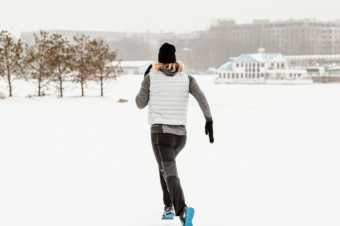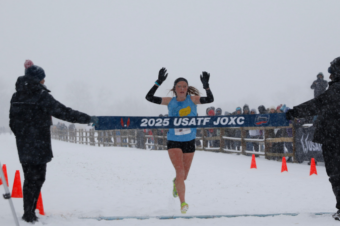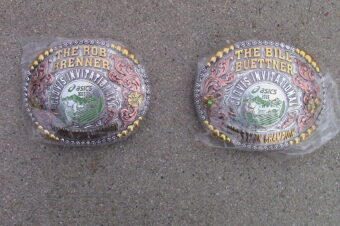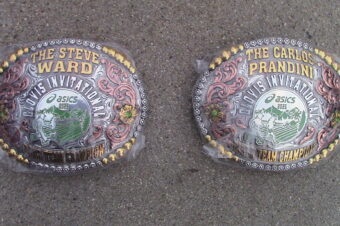

How to Tackle Race Day Weather: Running in the Rain, Heat, or Cold
BlogNewsOutdoorProduct Reviews/Top Ten Lists/Resources/TipsRunningStaffPicksXC-Track-Running October 4, 2024 Lauren Keating 0

Race day is always exciting, but when the weather doesn’t cooperate, it can become much more challenging. And then Mother Nature always seems to throw us a curve ball, like the recent heat waves in California. While excessive heat should stop us in our tracks, runners need to be able to be prepared for just about any kind of fall weather when it comes to their next cross country meet.
Whether it’s pouring rain, blistering heat, or bitter cold, cross country runners must adapt their approach to maintain peak performance. The weather can affect everything from your pacing to your hydration needs, so being prepared for different conditions on race day is key to success.
Running in the Heat
In 2023 and 2024, California saw record-breaking heat waves, with temperatures soaring into the 90s and even 100s in some areas. Other parts of the U.S. have seen extreme heat waves in recent years, making it crucial to understand how to handle hot race conditions. Heat can significantly affect performance and even pose health risks if not managed properly.
These extreme conditions can lead to dangerous situations like heatstroke. If you find yourself racing in similar weather:
- Take extra caution: Races may start earlier or be shortened, so follow the organizers’ advice and be aware of heat warnings.
- Listen to your body: If you feel dizzy, lightheaded, or extremely tired, slow down or stop. It’s not worth pushing yourself too hard in extreme heat.
Dress for Hot Weather Runs
It’s important to wear lightweight running apparel that is breathable and moisture-wicking. Avoid wearing black or dark colors. Protect your eyes from the sun and stay cool with a visor or hat with a breathable design.
Don’t forget to apply sunscreen to protect the skin.
Pacing in the Heat
Running in the heat requires a slower, more measured approach to prevent overheating and exhaustion. Here’s how to manage it:
- Start slow: Pace yourself early in the race to avoid heat exhaustion. If the temperature is high, don’t be afraid to run slower than your usual pace.
- Run by effort, not time: In extreme heat, you might not hit your usual times, but that’s okay. Focus on how your body feels instead of chasing PRs.
- Use cooling strategies: If aid stations offer ice or cold sponges, use them to cool down quickly. You can also run through sprinklers or douse yourself with water to keep your body temperature lower.
Hydration Tips
Hydration is even more critical in the heat, as dehydration can set in quickly, especially during long races.
- Drink plenty of water pre-race: Start hydrating the day before your race. On race morning, sip water and electrolyte drinks to stay ahead of dehydration.
- Bring electrolyte supplements: You’ll lose sodium and other key electrolytes as you sweat, so consider sports drinks or salt tablets if it’s particularly hot.
- Drink at every aid station: Even if you don’t feel thirsty, take small sips of water or sports drink at each station.
Running in the Rain
Athletes either love or hate running in the rain. It can be freeing and fun—not to mention a better alternative to extreme heat. However, it is wet and can add that chill factor for race day.
Dress Right for Rainy Races
Running in the rain can be tough, but with the right gear, you can stay comfortable and focused. Avoid cotton, which absorbs water and becomes heavy. Opt for synthetic, moisture-wicking fabrics that help keep you dry. Layer up to stay dry before the race, including a waterproof jacket. Just make sure it is made of breathable fabric to not overheat.
A running hat is also a good idea for keeping rain out of your eyes. Cross country runners need to make visibility a priority on the course.
Wet socks can lead to blisters. For this reason, choose thinner, moisture-wicking socks that drain water quickly. Bring a change of socks and sneakers in your race day bag for after the race.
Pacing in the Rain
Rainy conditions can impact the race course, especially if the terrain becomes muddy or slippery. To stay safe and run efficiently, slow down, especially during a turn. The grass or dirt can become slippery when wet so be mindful of foot placement and be cautious to not lose your footing.
Think short, quick strides to keep balance and prevent falling on the wet terrain.
If it’s pouring rain, you might find yourself tempted to go all-out early to “get it over with.” However, this strategy can cause you to burn out after using up all your energy early on.
Pro Tip: Wear different shoes to the start line and change into your racing shoes at the last minute. Wet shoes from warm-up can be uncomfortable for the race.
Hydration Tips
Even though you’re surrounded by water, you still need to hydrate properly. Rainy races can trick runners into drinking less, but you’re still sweating, even if it’s cooler.
Running in the Cold
Very few runners prefer to run in hot and humid conditions, but cold race day weather presents its own set of challenges. Runners should extend the warm up to make sure the body is ready to work. Many runners find cooler temperatures allow for the perfect conditions for a PR. Use the ideal fall race weather to your advantage.
Dressing for Cold Weather Run
The key is to layer up. Wear layers that are easy to remove. Always start with a base layer, an insulating middle layer, and a windproof outer layer that work well.
Don’t forget important accessories like gloves since your extremities lose heat quickly in cold weather, as well as a hat or headband is essential to stay warm.
Pacing in the Cold
Cold temperatures might make you feel stiff at first, but they can also help you maintain energy for longer. The cold air can make your lungs feel tight, so ease into your pace rather than sprinting off the start line.
Focus on breathing through your nose if possible or use a neck gaiter to warm the air.
Hydration Tips
In cold weather, it’s easy to forget about hydration, but you still need to drink water to stay hydrated. Even if you don’t feel thirsty, it’s important to stay on top of your hydration needs.
Conclusion
Race day weather can be unpredictable, but with the right strategies, you can adapt and perform your best whether it’s raining, scorching hot, or freezing cold. Focus on dressing appropriately, adjusting your pacing, and staying hydrated no matter what conditions you face. In extreme weather, like the heat waves California has experienced, always prioritize your safety and listen to your body. With these tips in mind, you’ll be ready to tackle any race day, rain or shine.









No comments so far.
Be first to leave comment below.